KAIST
BREAKTHROUGHS
Research Webzine of the KAIST College of Engineering since 2014
Fall 2025 Vol. 25Impacts of new town developments on carbon sinks in the Seoul metropolitan area
This study identifies how new town developments may be related to carbon sink losses in the Seoul Metropolitan Area, also recommending policies to address and enhance the nation's carbon neutrality strategies.
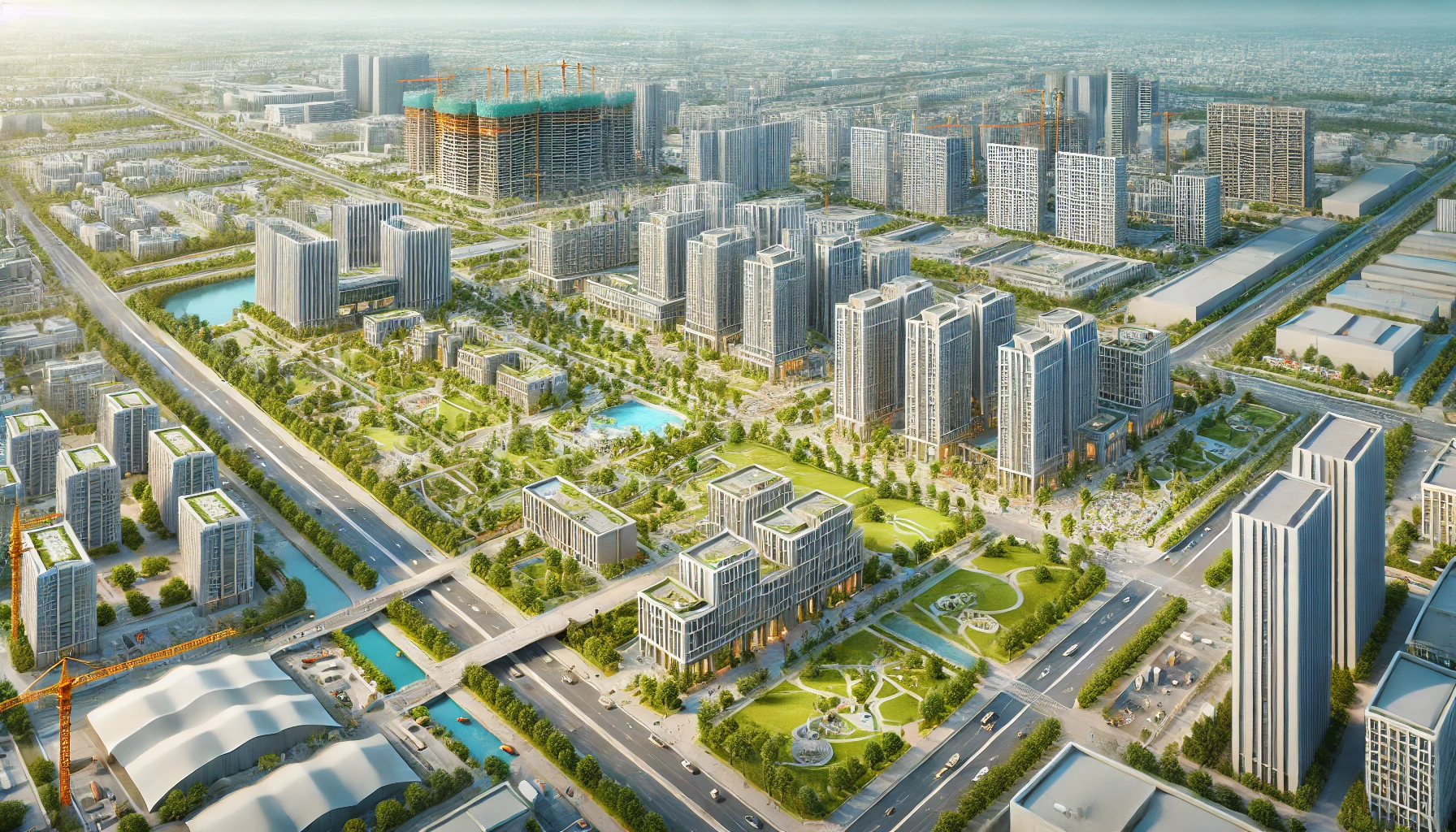
South Korea is among the host of nations abiding by the Paris Agreement’s ambitious 2050 deadline for carbon neutrality. Carbon sinks—ecosystems which store and sequester the element out of the atmosphere—may be a useful tool for reaching that goal. While the importance of key sinks such as forests, grasslands, and wetlands has been thoroughly studied, little is known about how contemporary development may impede Korea’s climate agenda. This study tracks new town development in the Seoul Metropolitan Area (SMA) as a potential catalyst for carbon sink loss.
The findings suggest that developments in greenbelts may severely deplete the SMA’s carbon storage potential. New town development may be especially troubling, as new growth tends to clear vegetation and convert farmlands to barren areas. Prior policies regarding greenbelt relaxation may bear some blame for encouraging peripheral development and depleting carbon sinks.
With ArcGIS and InVEST’s Carbon Storage and Sequestration model, land use changes between 2007 and 2021 were mapped to the region’s carbon resources. This type of temporal analysis allows insight into how urbanization influences such stocks.
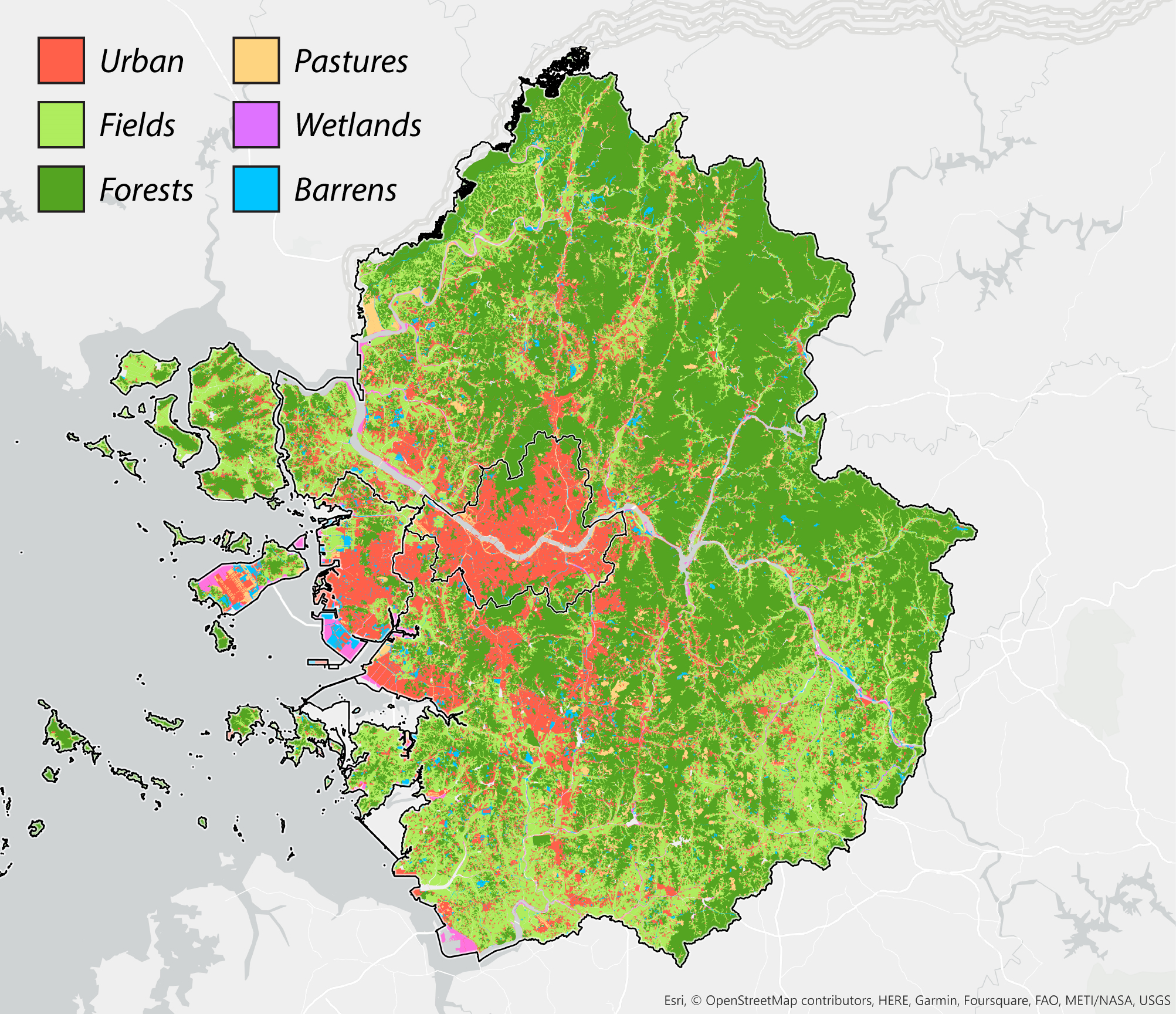
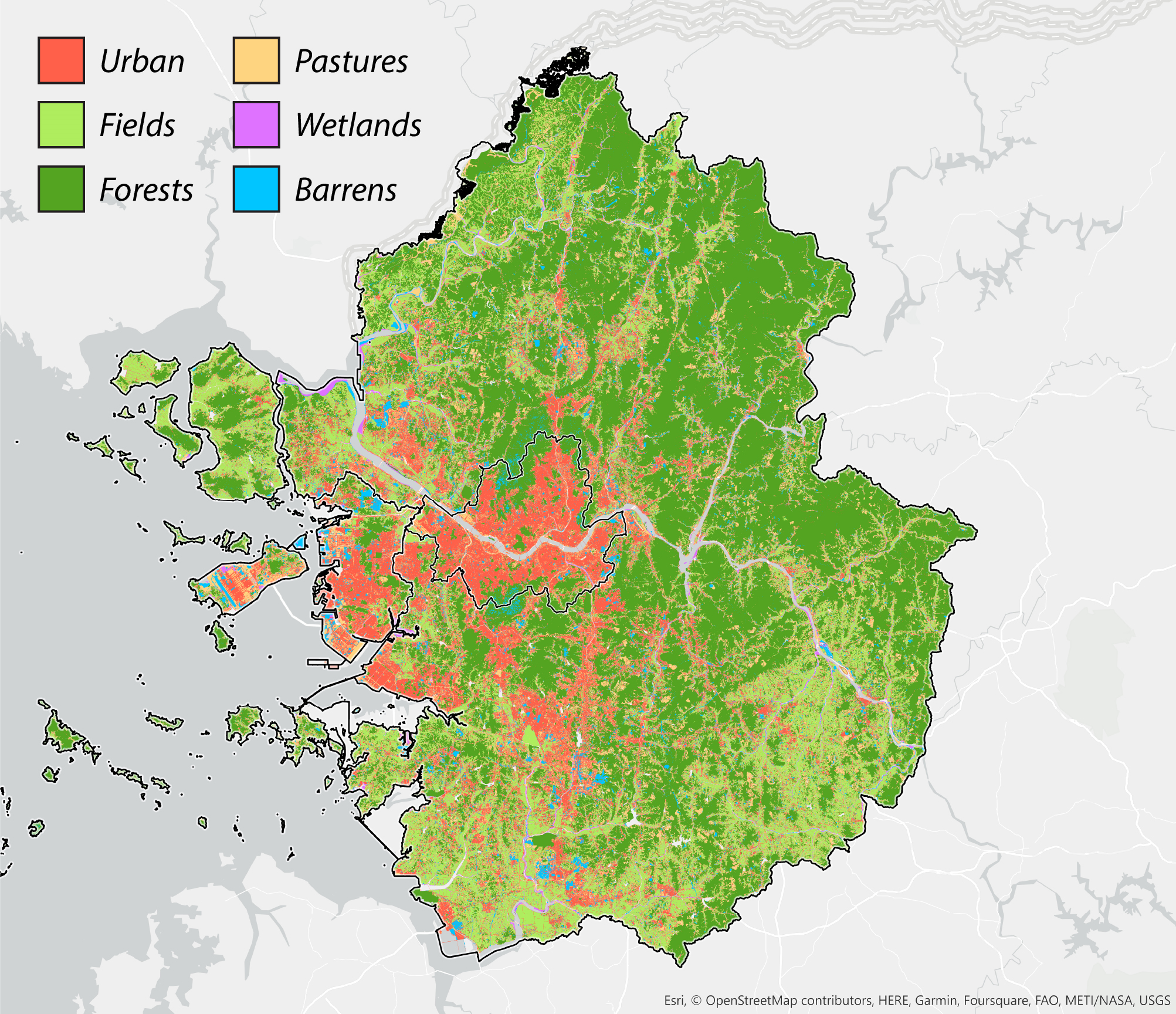
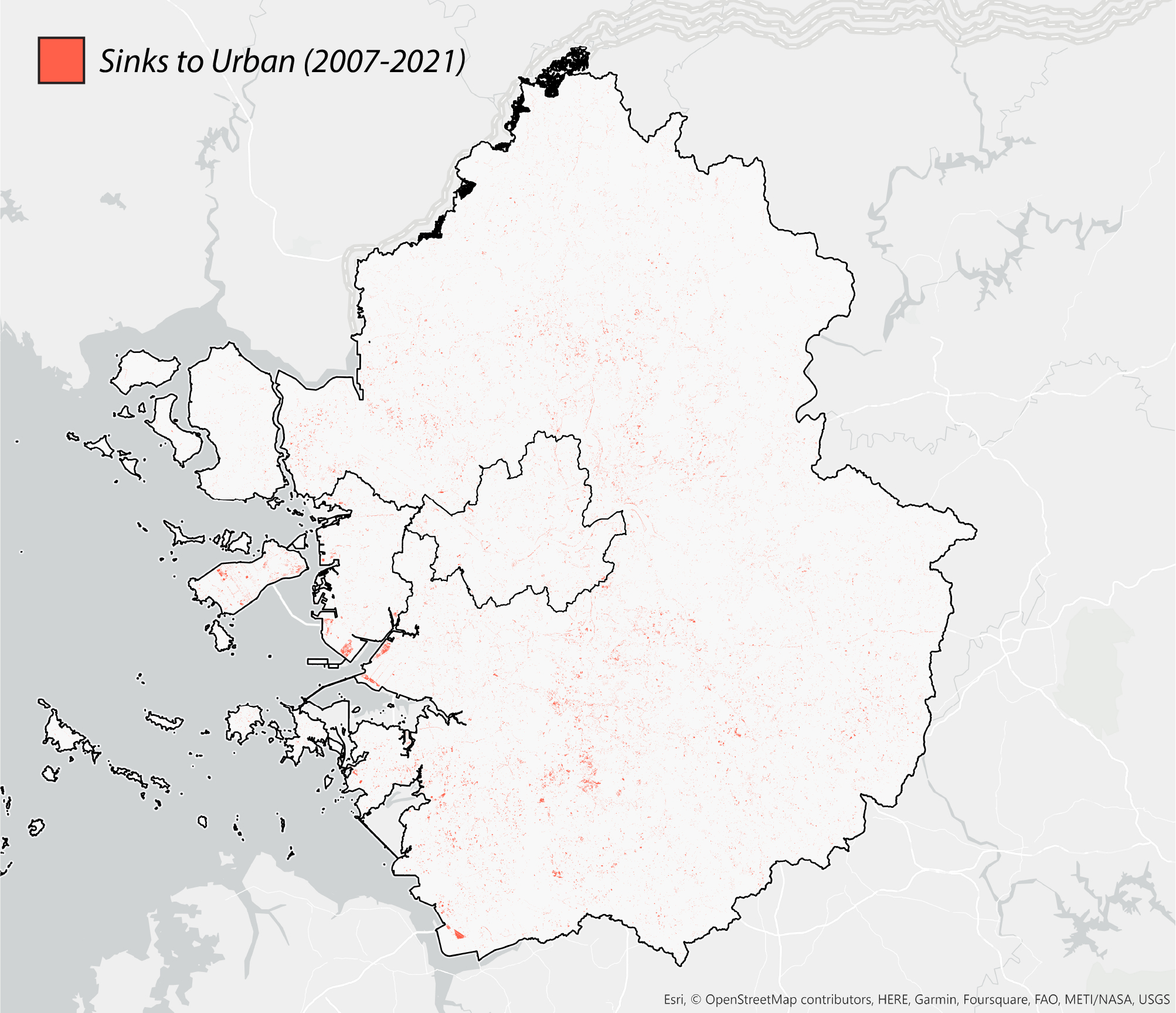
Figure 1 and Figure 2 correspondingly show the SMA’s land use and land cover (LULC) for 2007 and 2021. As is evident in both figures, sprawl is continuing throughout the region. Figure 3 highlights areas converted from carbon sinks to urban land between these two years, coinciding with significant stock losses to development.

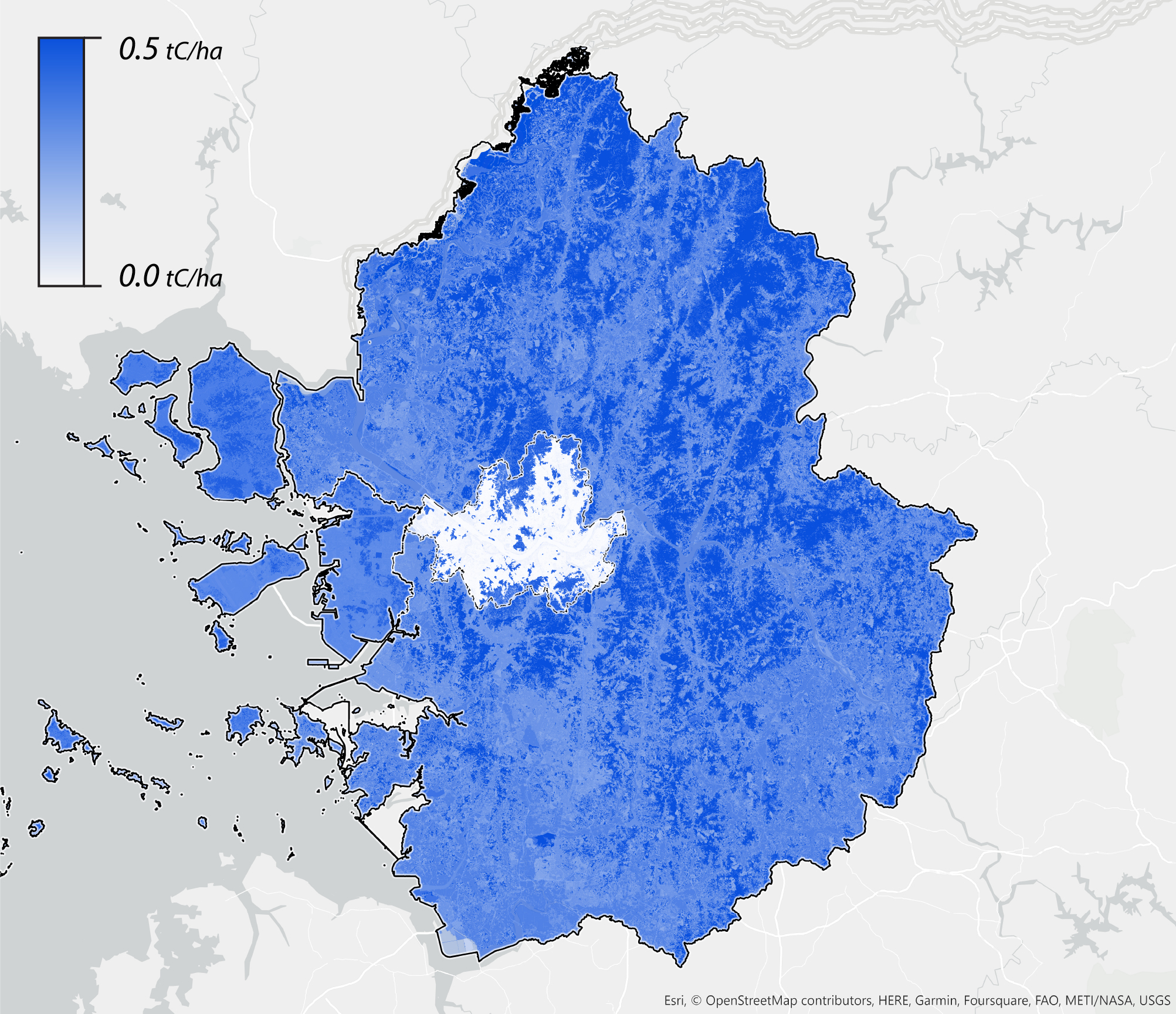

Figures 4 and Figure 5 correspondingly map carbon stocks for 2007 and 2021. Lighter areas such as Seoul have few carbon resources. Figure 6 shows stock changes between these two years. Significant losses were visible throughout Gyeonggi-do, where New Towns have sprouted.
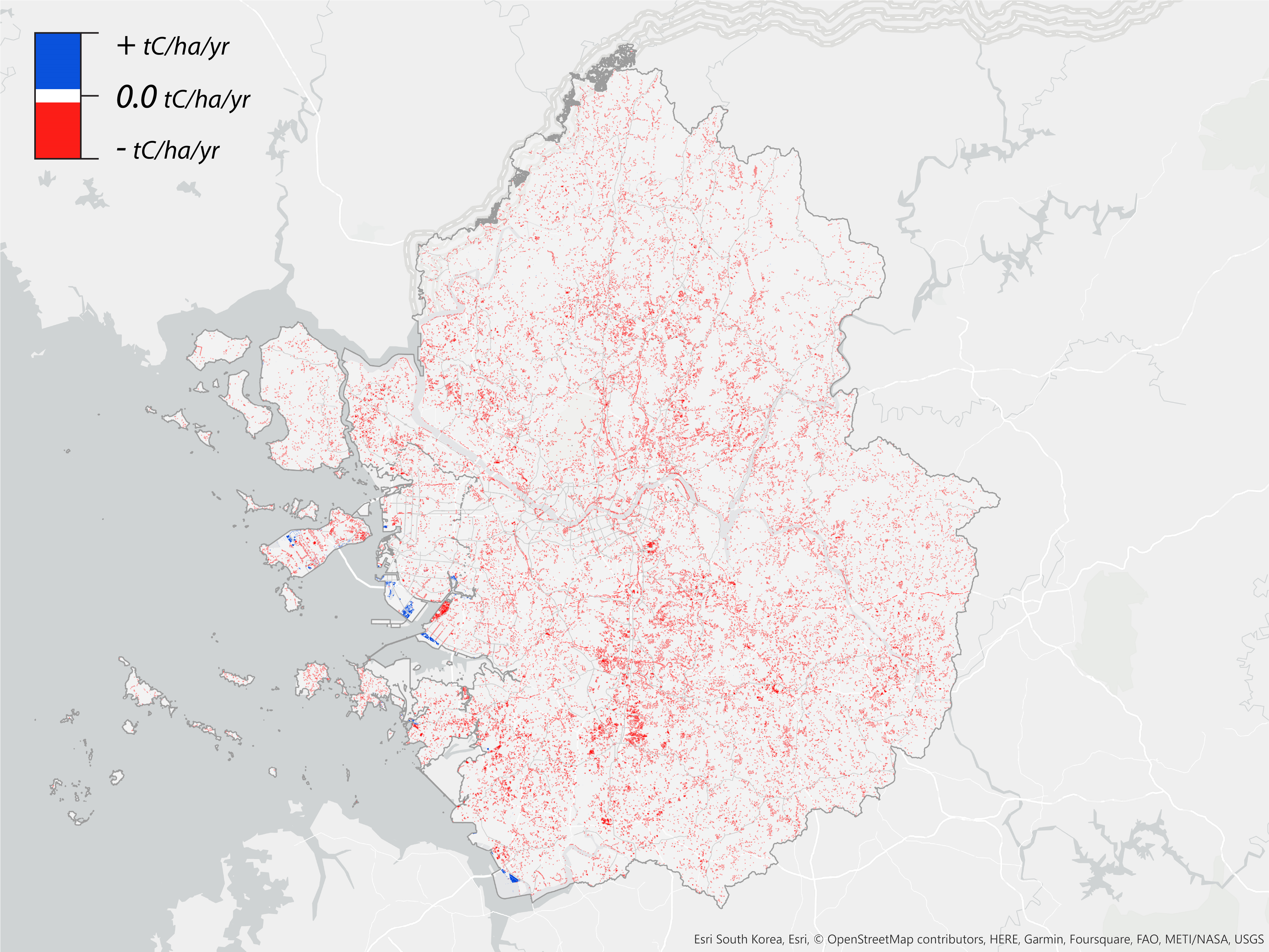
Figure 7 shows the dynamics of carbon sinks in urban land due to developments in the Seoul Metropolitan Area (SMA). It shows that most regions have lost carbon sinks.
Figures 7, 8 and 9 illustrate the new town of Dongtan for reference as an area of sink loss. Depletion in this area is highly attributable to urbanization and forest clearing.
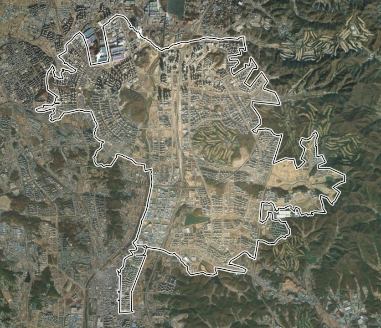
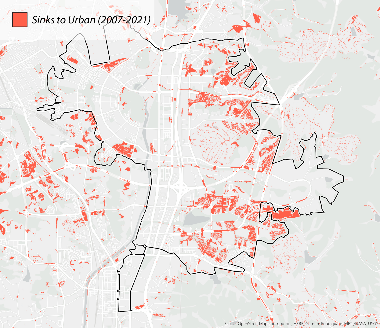
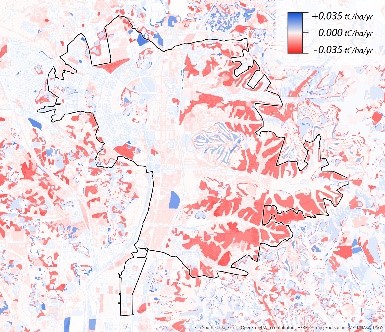
As greenbelts were released, new towns were developed on the released land, which could either be developed directly from carbon sinks or converted from carbon sinks to agriculture or idle land and then developed. The study found that development from carbon sinks resulted in a decrease in carbon stocks, while development into agriculture and idle lands resulted in some increase in carbon stocks. Therefore, appropriate urban growth management and land conservation based on the type of land cover is needed. Preserving existing carbon sinks and creating large-scale park systems as part of agricultural and idle land development strategies will promote suitable development and climate change mitigation.
Following research will expand this study’s scope to the greater nation, exploring broader trends in Korean development related to sustainability.
Most Popular

A New solution enabling soft growing robots to perform a variety of tasks in confined spaces
Read more
Development of a compact high-resolution spectrometer using a double-layer disordered metasurface
Read more
Towards a more reliable evaluation system than humans - BiGGen-Bench
Read more
AI-Designed carbon nanolattice: Feather-light, steel-strong
Read more
Dual‑Mode neuransistor for on‑chip liquid‑state computing
Read more